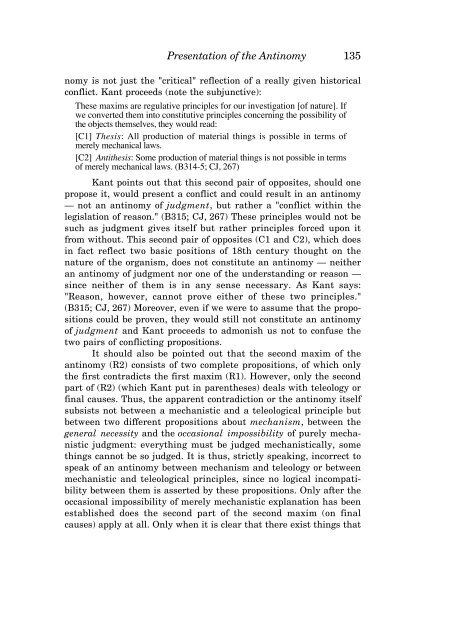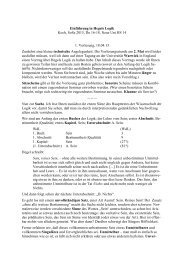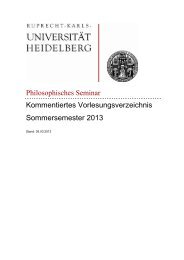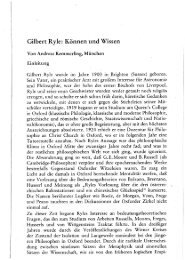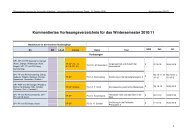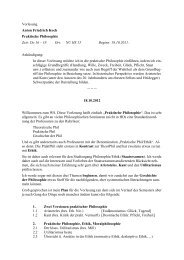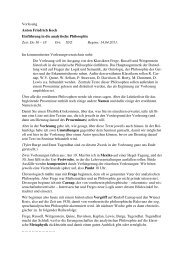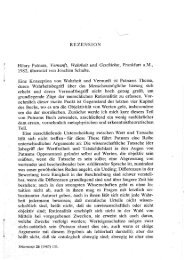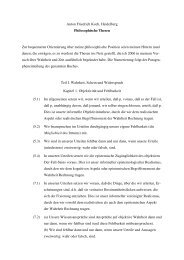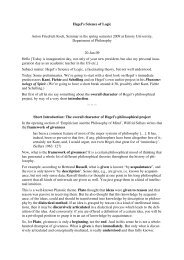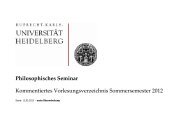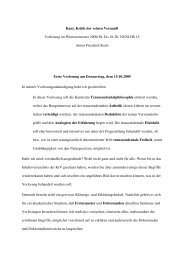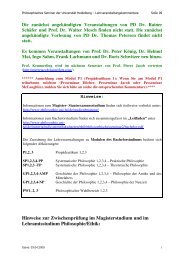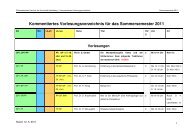KANT'S CRITIQUE OF TELEOLOGY IN BIOLOGICAL EXPLANATION
KANT'S CRITIQUE OF TELEOLOGY IN BIOLOGICAL EXPLANATION
KANT'S CRITIQUE OF TELEOLOGY IN BIOLOGICAL EXPLANATION
You also want an ePaper? Increase the reach of your titles
YUMPU automatically turns print PDFs into web optimized ePapers that Google loves.
Presentation of the Antinomy 135<br />
nomy is not just the "critical" reflection of a really given historical<br />
conflict. Kant proceeds (note the subjunctive):<br />
These maxims are regulative principles for our investigation [of nature]. If<br />
we converted them into constitutive principles concerning the possibility of<br />
the objects themselves, they would read:<br />
[C1] Thesis: All production of material things is possible in terms of<br />
merely mechanical laws.<br />
[C2] Antithesis: Some production of material things is not possible in terms<br />
of merely mechanical laws. (B314-5; CJ, 267)<br />
Kant points out that this second pair of opposites, should one<br />
propose it, would present a conflict and could result in an antinomy<br />
— not an antinomy of judgment, but rather a "conflict within the<br />
legislation of reason." (B315; CJ, 267) These principles would not be<br />
such as judgment gives itself but rather principles forced upon it<br />
from without. This second pair of opposites (C1 and C2), which does<br />
in fact reflect two basic positions of 18th century thought on the<br />
nature of the organism, does not constitute an antinomy — neither<br />
an antinomy of judgment nor one of the understanding or reason —<br />
since neither of them is in any sense necessary. As Kant says:<br />
"Reason, however, cannot prove either of these two principles."<br />
(B315; CJ, 267) Moreover, even if we were to assume that the propositions<br />
could be proven, they would still not constitute an antinomy<br />
of judgment and Kant proceeds to admonish us not to confuse the<br />
two pairs of conflicting propositions.<br />
It should also be pointed out that the second maxim of the<br />
antinomy (R2) consists of two complete propositions, of which only<br />
the first contradicts the first maxim (R1). However, only the second<br />
part of (R2) (which Kant put in parentheses) deals with teleology or<br />
final causes. Thus, the apparent contradiction or the antinomy itself<br />
subsists not between a mechanistic and a teleological principle but<br />
between two different propositions about mechanism, between the<br />
general necessity and the occasional impossibility of purely mechanistic<br />
judgment: everything must be judged mechanistically, some<br />
things cannot be so judged. It is thus, strictly speaking, incorrect to<br />
speak of an antinomy between mechanism and teleology or between<br />
mechanistic and teleological principles, since no logical incompatibility<br />
between them is asserted by these propositions. Only after the<br />
occasional impossibility of merely mechanistic explanation has been<br />
established does the second part of the second maxim (on final<br />
causes) apply at all. Only when it is clear that there exist things that


